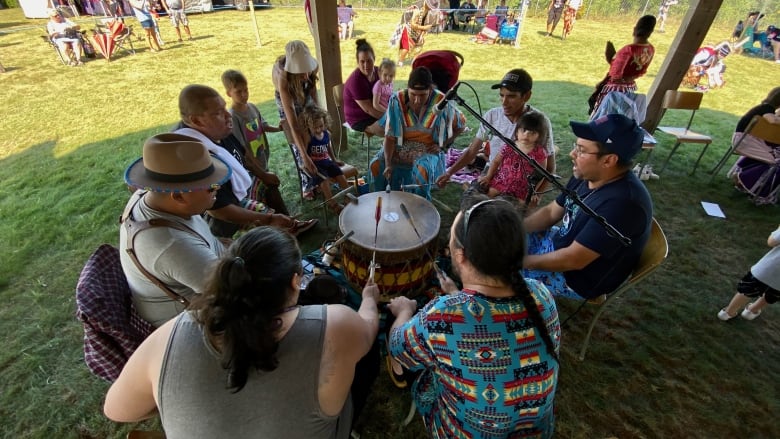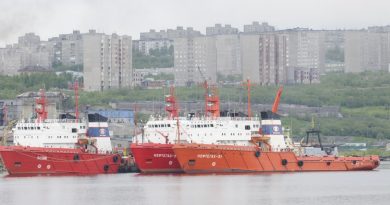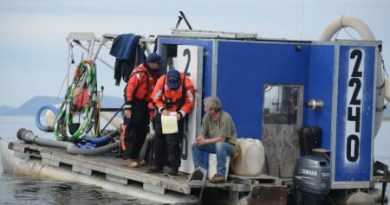Indigenous population hits 1.8M, growing at twice rate of non-Indigenous Canadians

The Indigenous population grew almost twice as fast as the non-Indigenous population, and now stands at 1.8 million, or about five per cent of the population as a whole, according to newly released census data.
From 2016 to 2021, the Indigenous population grew by 9.4 per cent, compared to the non-Indigenous population, which grew by just 5.3 per cent over the same period.
While that growth rate is high, it’s almost half the growth rate of the Indigenous population between 2011 and 2016, which was 18.9 per cent.
The 2021 census found that the faster growth rate of the Indigenous population can be explained by a higher birth rate and changes, over time, in how census questions are answered.
“In general, respondents have become more likely to identify as Indigenous over time,” the census said.
“The reasons people are more likely to identify as Indigenous may be related to social factors and external factors, such as changes to legislation or court rulings.”
The 2021 census also found that 3.2 per cent of Indigenous children in Canada were in foster care compared to just 0.2 per cent of non-Indigenous children in Canada.
In total, Indigenous children accounted for more than half of all children in foster care, at 53.8 per cent, despite representing only 7.7 per cent of children 14 and under in Canada.
Despite the federal government’s efforts to reduce the over-representation of Indigenous children and youth in foster care, the number of Indigenous children in foster care remains almost unchanged from 2016.
Of the 459,210 Indigenous children aged 14 and under, 14.2 per cent lived with at least one grandparent, compared with just 8.9 per cent of non-Indigenous children. More than one third, or 35.8 per cent, of Indigenous children lived in a single-parent household, compared to 56 per cent who lived in a two-parent household.
Indigenous housing
The number of Indigenous people living in housing that was in need of major repairs was almost three times higher in 2021 than it was for non-Indigenous Canadians, although it has fallen slightly since the 2016 census.
Almost one in six Indigenous people, or 16.4 per cent, lived in a place that was in need of major repairs, a decline of 2.7 per cent from 2016. The number of non-Indigenous Canadians living in housing that needs major work stood at 5.7 per cent.
The decline in the number of Indigenous people living in housing in disrepair did not decline evenly across all Indigenous groups over the last five years.
The number of First Nations living in housing that needed major repairs declined by almost four per cent, while the number of Métis living in housing in disrepair declined by only 1.2 per cent and the number of Inuit living in defective housing did not change.
The census also found that 17.1 per cent of Indigenous people lived in crowded housing, compared to just 9.4 per cent of non-Indigenous Canadians. More than 40 per cent of Inuit lived in crowded housing, compared with 21.4 per cent of First Nations and 7.9 per cent of Métis.
While Indigenous people were more likely to live in crowded housing compared with the non-Indigenous population, the gap between the two groups narrowed from 9.5 per cent 2016 to 7.8 per cent in 2021.
Low-income and Indigenous language rates
For the first time, low-income data was collected for all geographic regions of the country including northern areas and reserves revealing that 18.8 per cent of Indigenous people lived in a low-income household compared with just 10.7 per cent of non-Indigenous Canadians.
While still high, the number of Indigenous people living in a low-income household dropped dramatically since the time of the last census, from 28.1 per cent to 18.8 per cent, the rate of decline was heavily influenced by the actions by the federal government.
“This downward trend in low income has been observed across Canada and was largely driven by government transfers in response to the COVID-19 pandemic,” the census said.
The census also found that from 2016 to 2021, the number of Indigenous people that could hold a conversation in an Indigenous language declined by 4.3 per cent.
This decline was attributed to a 8.1 per cent decrease in the number of Indigenous people whose first language learned in childhood was Indigenous.
The census found that while the number of Indigenous people with an Indigenous mother tongue had declined, the number of Indigenous people who learned to speak an Indigenous language increased by 7 per cent over the same period.
Highlights of the 2021 census on Indigenous population in Canada:
- There were 624,220 Métis living in Canada, up 6.3 per cent from 2016.
- There were 70,545 Inuit living in Canada.
- There were 1,048,405 First Nations living in Canada.
- There were 801,045 Indigenous people living in large urban centres, up 12.5 per cent from 2016 to 2021.
- The Indigenous population was 8.2 years younger than the non-Indigenous population overall.
- Indigenous people were more likely than the non-Indigenous population to be living in a dwelling that was in need of major repairs (16.4 per cent compared to 5.7 per cent) or live in crowded housing (17.1 per cent compared to 9.4).
- Almost one in five Indigenous people in Canada (18.8 per cent) lived in a low-income household. This was down nearly 10 percentage points from 2016, but the decline was likely driven by government transfers in response to the COVID-19 pandemic, according to Statistics Canada.
Related stories from around the North:
Canada: For Inuit delegates in France, facing alleged abuser together helped heal a deep wound, CBC News
Finland: Sami Parliament in Finland agrees more time needed for Truth and Reconciliation Commission preparation, Eye on the Arctic
Norway: Sami education conference looks at how to better serve Indigenous children, Eye on the Arctic
Sweden: Sami in Sweden start work on structure of Truth and Reconciliation Commission, Eye on the Arctic
United States: Alaska reckons with missing data on murdered Indigenous women, Alaska Public Media



